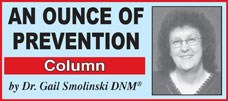Sadly, we are a nation of people whose bodies are full of inflammation. Inflammation can occur from different causes, including a poor diet, unbalanced hormones, chemicals, bacterial or viral infections, and, of course, physical injuries.
INFLAMMATORY PROCESS
Inflammation usually accompanies damaged tissue. When cells are injured by any cause, various chemicals are released. This process results in inflammation of damaged tissues that are rich in blood vessels.
The inflammatory process starts when there is trauma to body tissues. It prevents the spread of injury, disposes of disease-causing microorganisms and promotes healing.
The four main local signs of inflammation are redness, heat, swelling and pain. Often, there is also a loss of function.
During the acute inflammation phase, repair mechanisms are put into place by the immune system. Normally, healing should occur within 8 to 10 days.
CHRONIC INFLAMMATION
However, at times, the persistence of the infectious agents or the injured person's weakness, or both, may postpone the healing for more than two weeks. Chronic inflammation may also develop from prolonged exposure to internal or external toxic substances.
Chronic inflammation may eventually lead to healing or to the formation of granulomas, which are local inflammatory tumors or growths. Granulomas are typically found in diseases like sarcoidosis and tuberculosis.
ANTI-INFLAMMATORY DIET
Certain foods are better than others for fighting inflammation, while certain foods actually cause inflammation. The best fruits for this purpose are cantaloupe, pink grapefruit, raspberries, strawberries and rhubarb. The worst are banana and mango.
The best vegetables are carrots, collards, garlic (Yes!), kale, onions, spinach and sweet potatoes. Avoid corn, white potatoes and especially French fries!
Breads - The best are flour tortillas, mixed grain, pumpernickel and rye breads.
The worst are bagels, English muffins, French or Vienna bread, Kaiser rolls and hot dog or hamburger buns. Wheat, generally speaking, is considered inflammatory.
Pasta and Grains - The best are barley, couscous, kasha and rice noodles. The worst include cornmeal, corn pasta, millet and white rice.
Oils - The best are almond, apricot kernel, avocado, canola, hazelnut, olive and high oleic safflower oils. Avoid cottonseed, palm kernel and high linolenic safflower oil.
Crackers, chips, etc. - The best are Melba toast, saltines and tea biscuits. The worst are corn chips, potato chips and pretzels.
Nuts and Seeds - The best are almonds, cashews, flaxseed, pecans, and Brazil, hazel, hickory and macadamia nuts. There are no bad ones!
Herbs and Spices - The best are curry powder, turmeric, ginger and garlic. There are no bad ones here, either!
Beverages - Calli, green and herbal teas, carrot juice, club soda and mineral water are the best. The worst are soft drinks, lemonade and cranberry juice.
If you eat fish, avoid farmed salmon. Choose wild caught salmon instead.
NATURAL ANTI-INFLAMMATORY OPTIONS
The well-known supplement, Max GXL, is very effective for lowering the level of inflammation in the body.
Therapeutic enzymes, taken between meals, can also fight inflammation very effectively.
As well, there are some very valuable homeopathic remedies, taken orally, that can decrease pain and inflammation. They can also help to minimize the bad effects of injuries and promote healing.
Homeopathic topical choices for inflammation include Arnica gel and R30 ointment. I find both of these to be excellent for reducing inflammation and pain.
Certain essential oils are excellent for reducing inflammation, minimizing further tissue damage and speeding healing. Wintergreen, peppermint, clove and nutmeg essential oils are all anti-inflammatory
Lavender and myrrh work well for inflammation due to tissue damage and bruising. If inflammation is due to a bacterial infection, tea tree oil and German chamomile are suitable choices. When inflammation is caused by a viral infection, ravensara, hyssop and thyme are appropriate.
LOW INTENSITY LASER THERAPY
Last, but far from least, Low Intensity Laser Therapy enhances the body's natural healing processes. A light source is placed in contact with the skin, allowing the light energy to penetrate damaged tissues.
It can be curative, reducing or eliminating pain and inflammation, while restoring normal function, as opposed to strictly relieving symptoms. It is considered totally safe and highly effective.
Keep in mind that if you combine some of these natural anti-inflammatory options, you may be even more amazed and delighted with the results you get!
Dr. Gail Smolinski, Doctor of Natural Medicine, has her Doctor of Naturopathy degree and is Board Certified in Traditional Naturopathy and in Nutritional Wellness.
She is a Certified Low Intensity Laser Therapist, Master Herbalist, Registered Nutritional Consultant, Professional Homeopath and Holistic Iridologist.
Dr. Gail offers Low Intensity Laser Therapy, health consultations, bio-energetic therapies, detoxification footbaths and a wide variety of professional health products at her natural health clinic. You may contact her at 306-783-1261 on weekdays from 9 to 5 or visit her website at www.drgail.ca
This column is not intended to diagnose, treat or cure any disease. It provides general information about health and nutrition. It is run bi-weekly, space permitting.




